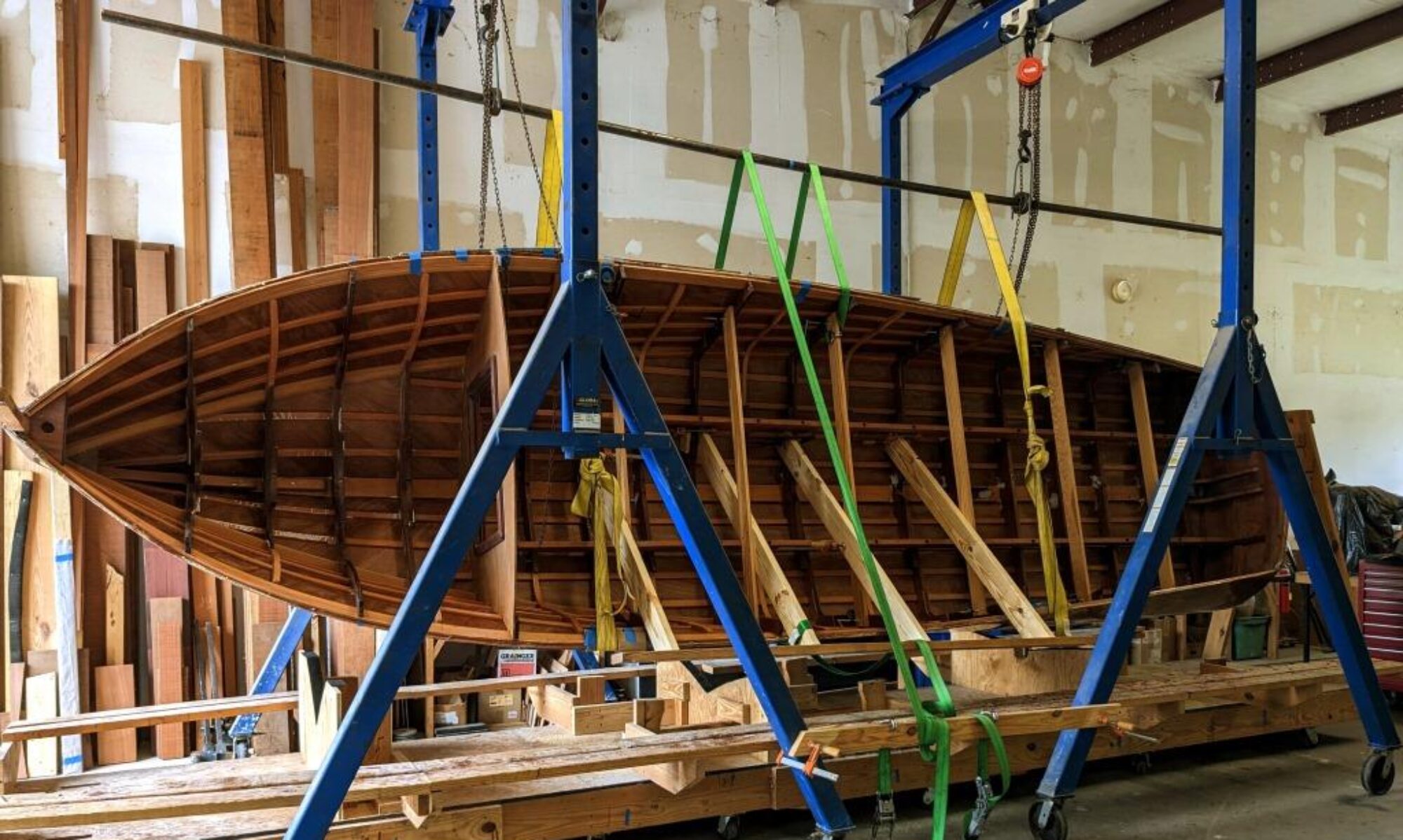
One fine June day, a 2013 Riva Iseo showed up at the shop after the owner asked if I could do varnish work on a wooden deck. He had purchased the boat used from someone in Miami, FL. Continue reading “Restoring the wood on a Riva Iseo”

Boat Repair, Restoration, Building

One fine June day, a 2013 Riva Iseo showed up at the shop after the owner asked if I could do varnish work on a wooden deck. He had purchased the boat used from someone in Miami, FL. Continue reading “Restoring the wood on a Riva Iseo”

Boat motors use the water they’re floating in to cool them. Some, like most outboards, have what’s called a “raw water” system. The water the boat is floating in circulates through the engine block, then exits with the exhaust. Most modern inboards have a “fresh water” or “indirect” cooling system. In this system, coolant like that in your automobile is pumped through a heat exchanger. The coolant is circulated through the engine block rather than the raw water itself. Continue reading “Adding a Fresh Water Cooling System”

I’ve done all I can to the hull from the outside. So it’s time to flip the boat upright so I can start working from the inside. To prepare for this, I’ve made 3 cradles to hold the boat in position once its upright. I used the patterns for some of the frames with one placed directly under where the engine will be mounted. Using the waterlines on the patterns, I was able to set up the cradles so the boat will sit level and plumb. Continue reading “Flipping the Boat”

At some point, if you’re going to build a boat, you’re going to have to put some holes in it. It just doesn’t seem natural at first. But it gets easier the more you do it. Best to get it right the first time though. Continue reading “Boring the Shaft Hole”

I have not failed. I have just found 10,000 ways that won’t work. — Thomas Edison
Adding a layer of fiberglass cloth to any wooden boat will add an enormous amount of toughness to it. And if you do it right, the fiberglass is invisible. That’s right — invisible. The problem is in the “doing it right” part.
Okay, let’s step back a bit. Continue reading “Fiberglass Setback”

Last time, I talked a little about cutting the flat along the keel so I could put a cap over it to keep from having exposed end grain there. My friend Steve asks, “Well, exactly how did you do that?” (or words to that effect). It did, in fact, take a little bit of doing. So I decided to explain myself a little better in a follow-up post. Continue reading “Cutting the Flat”

The twist in the bottom planks at the bow is pretty extreme. When it becomes impractical to clamp enough twist or curve into a plank to fit it properly, it helps to be able to get it closer to the final shape before you pop a blood vessel in the struggle. Continue reading “Steaming the Bottom Plank Blanks”

The final topsides plank is fit and glued in place. Huzzah! It took a long time to get here because I elected to vacuum bag each plank individually. I wanted the tightest seams I could get. And in order to do that, you need to know the plank you’re fitting against isn’t going to move, even slightly. Without locator screws, which you can use in traditional boat building, you don’t know things will go back together exactly as they did during the dry fit. The topsides gets a lot of scrutiny on any boat–perhaps not as much as the deck, but it’s what people notice first. Continue reading “Final Topsides Plank and a Patch”

Eventually all boats leak. And with a rivetted aluminum boat, a likely culprit is the rivets. The working of the hull from various stresses that happen during use eventually takes its toll and starts to “wallow out” the rivet holes that were so nice and tight when the boat was new. Continue reading “Fixing Leaky Rivets on an Aluminum Boat”

Last month, I described in detail the process of scribing, cutting, and fitting the first strake of final planking on our Palm Beach 22 mahogany runabout. If you missed it, I suggest you go back and take a look. It’s a necessary precursor to the process I’m about to discuss.
Laying up each plank and fitting it is a time consuming, although satisfying process. Refining your skill in creating light-tight seams between planks is a worthwhile pursuit. The better you are at scribing the previous plank edge onto your new blank, the quicker it goes. It’s a time-honored skill among boat builders. But let’s take a look at a more efficient method. Continue reading “Fitting the Next Planks Using the Router”